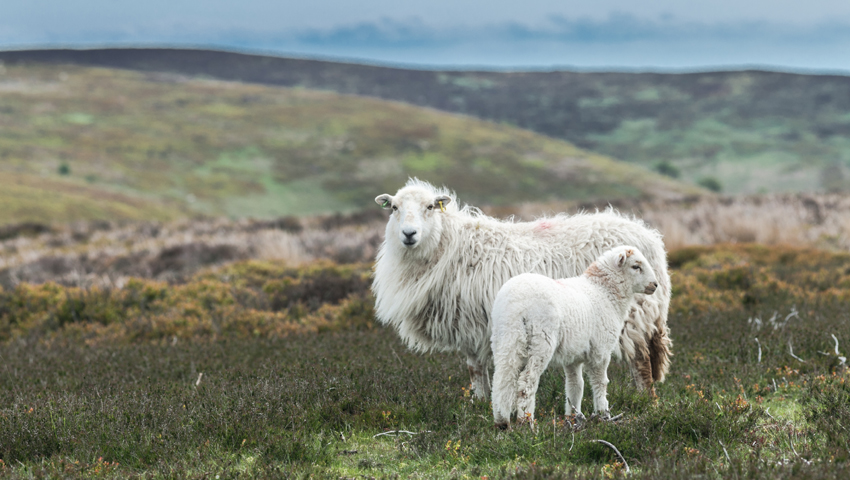A MAJOR milestone in the long-term goal of evidencing the sustainability credentials of Welsh hill and upland farms has been reached with the establishment of a biodiversity baseline.
Hybu Cig Cymru– Meat Promotion Wales (HCC), has ascertained a benchmark by undertaking a number of biodiversity audits as part of the Hill Ram Scheme under the wider Red Meat Development Programme.
The findings, which utilise data from 25 farms in Wales across more than 4,000 hectares of land, suggests a wide variety of habitats within Welsh hill and upland farms can be found.
Twelve key habitat types were identified by the audit, conducted by an independent ecological consultancy, with semi-natural grasslands, upland mosaics, and acidic grasslands among the most common.
With the establishment of the benchmark, HCC has taken a significant step towards realising its long-term aims of promoting environmental sustainability within the red meat industry.
The baseline provides a clear understanding of the intricate ecosystems nurtured within Wales by red meat farms, reinforcing the evidence that underpins the PGI Welsh Lamb and PGI Welsh Beef brands.
Key to the variance in habitats has been the combination of livestock production methods along with agri-environment incentives which have shaped and maintained biodiversity whilst producing high-quality red meat.
Rachael Madeley-Davies, HCC’s Head of Sustainability and Future Policy, said, “The development of this biodiversity report represents a crucial first step in reaching our long-term aim of evidencing that Welsh farmland not only produces world-class red meat, but plays an important role in the development and maintenance of habitat.
“Each farm contributes much more than just livestock production; everything from managing landscapes, preserving wildlife, protecting water courses, and promoting public access routes play a role in the cultivation of biodiverse areas.”
“Through this foundational work, the legacy of the Hill Ram Scheme will be strengthened as we further foster the relationship between sustainable agriculture and ecological preservation, maintaining a thriving ecosystem for generations to come.”
The findings will act as a platform for wider data gathering focusing on the total environmental footprint of Welsh red meat, including carbon, soil quality, air quality, and water quality.
This strategic move aligns with HCC’s long-term vision to ensure Welsh Lamb and Welsh Beef are not only of the highest quality but also environmentally robust and sustainable.
Madeley-Davies added, “It is incredibly important that this report does not act solely in a vacuum and can instead showcase farmers what practical steps can be taken to better preserve and develop suitable habitats for optimal biodiversity.
“This intelligence highlights remarkable findings regarding our hill and upland farms across Wales, and we would like to thank all our partners for their involvement in this project.”
